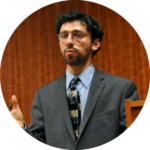Niederwiesen

First Jewish presence: early 18th century (perhaps earlier); peak Jewish population: 124 in 1861 (21.1% of the total pop.); Jewish pop. in 1933: 20
Niederwiesen (Lower Wiesen)
Jews initially buried their dead in the Jewish cemetery of nearby Oberwiesen (Upper Wiesen) (mentioned in 1730). Later, however, the Niederwiesen community consecrated its own cemetery on Morscheimer Weg. Other communal institutions included a synagogue (1745), a new synagogue (1770), a mikveh (1840) and yet another synagogue (1864). The Jewish school, which operated in a small building located near the second synagogue, was opened in 1845; in 1852, 19 boys and 11 girls were enrolled there. In 1933, after decades during which community membership had steadily dwindled, only 20 Jews lived in Niederwiesen. The rabbinical authorities denied the community’s request to disband, and, in 1934/35, elections were held for a community leader. On Pogrom Night, the synagogue was destroyed. The building’s ruins were later cleared. Seven Jews immigrated to the United States, 11 relocated within Germany and two died in Niederwiesen. The village’s last Jews had left by the end of 1939. At least three Jews originally from Niederwiesen perished in the Shoah. The Jewish cemetery was damaged during the Nazi period.Nurit Borut
Copyright: Pogrom Night 1938 - A Memorial to the Destroyed Synagogues of Germany/ germansynagogues.bh.org.il
Notes
Sources: Alemannia Judaica, www.alemannia-judaica.de The Encyclopedia of Jewish Life Before and During the Holocaust, Shmuel Spector [Ed.], [publisher] Yad Vashem and the New York University Press, 2001., Pinkas HaKehillot Germania/ פנקס הקהילות גרמניה (Hebrew), [published by] Yad Vashem, 1992: Hesse,Hesse-Nassau, Frankfurt
Details
| Date Added | May 19, 2020 |
|---|---|
| Category | Residential |
| Country | DE |
| State | Rhineland-Palatinate |
| City | Niederwiesen |
| Exhibits | Pogrom Night 1938 - A Memorial to the Destroyed Synagogues of Germany |
Have additional information, photos, connections, or other resources to contribute?
Help Us in the race against time to time document Jewish history!






